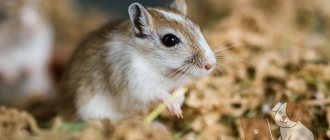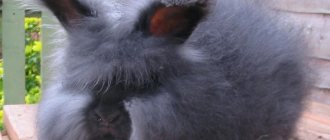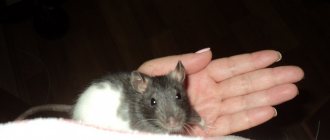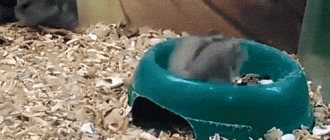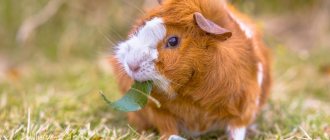- Wild animals
- >>
- Mammals
The African pygmy hedgehog is a chordate mammal. Translated from Greek it means “snake eater”. Recently, it has become fashionable to keep small rodents and other wild animals at home. Small in size and easy to care for, African pygmy hedgehogs have become full-fledged owners of many city apartments. Therefore, it is better to learn more about what kind of animals they are, how they should be treated, what to feed and how to care for them.
Origin of the species and description
Photo: African pygmy hedgehog
The origin of such a unique animal as the African pygmy hedgehog is unknown. It is believed that the animal was the result of the work of European breeders, who obtained a new breed of hedgehogs at the end of the last century.
The African pygmy hedgehog is a hybrid breed bred specifically for ease of keeping at home. Beautiful and cute, the small animal has a friendly character, it is very easy to keep in captivity, it does not hibernate like a regular hedgehog. The animal can eat special food. And if you add homemade meat waste to the diet, you can provide a completely balanced diet and a happy life for your pet.
Video: African pygmy hedgehog
These cute animals created a real stir in European and domestic pet markets. Many nurseries have appeared for breeding dwarf hedgehogs, especially since they are unpretentious and very cute animals.
The natural habitat of pygmy hedgehogs is African countries: Ethiopia, Mauritania, Zambia, Senegal, Tanzania, etc. These animals are heat-loving, unpretentious and very active. They have the ability to move well in mountainous areas and climb stones or rocks. The animal can easily climb a cliff up to 1.5 km high, reaching the top of a cliff or steep cliff, where you can usually find bird nests and feast on eggs.
Walking outside
Like all living creatures, African hedgehogs, whose maintenance is not at all burdensome for its owner, also need fresh air. If it’s a warm, fine day outside, but without stuffiness and exhausting heat, you can take a walk with the animal.
It should be remembered that they are very nimble and can run out onto the grass and eat an earthworm or some insect. This should not be allowed under any circumstances. The fact is that after eating a worm, hedgehogs can get capillariasis. Street insects only cause harm. You should give your pet only those that have been grown artificially. In addition, various microbes live in the grass, from which you should protect your pet.
Appearance and features
Photo: Animal African pygmy hedgehog
The African hedgehog has the appearance of an ordinary European hedgehog, only in a smaller version. A cute long muzzle and large black eyes are trimmed with fluffy soft and light fur. The same short fur is also found on the tummy. The short ears are brown and stand out well against the main light background.
The small oval body of the dwarf animal measures up to 25 cm and has a small tail. The back, sides and head of the hedgehog are covered with short black and white or sandy spines. Males are small, hedgehogs are slightly larger. The animal has short front legs with five toes. The hind legs are four-toed. The middle fingers are very long, which makes it easy to clean their needles. Sharp claws are capable of firmly holding small prey. The front fangs are very sharp and easily penetrate the body of a small rodent, lizard or snake.
The weight of an adult reaches up to 500 - 700 grams. The African hedgehog lives no more than 3-4 years; in captivity it can live up to 7-8 years. The animal can have different colors. There are dark species with small light stripes. In the natural habitat there may be brown, brownish or sandy tones. There are spotted individuals that can easily hide in thickets of grass or windbreaks.
Recently, breeders have bred several decorative breeds of dwarf hedgehogs with different interesting colors. You can find chocolate, white or black and white needles. There is even a cinnamon color that can only be seen in artificial habitats. The more original the color can be obtained, the higher the specimen is valued on the market.
Feeding
You shouldn’t think too much about what the African hedgehog eats. Premium cat food is perfect for him. It is natural and does not contain any flavors or other harmful additives. It is also necessary to ensure that the food does not contain starchy ingredients, such as corn or potatoes.
Since cat food is largely multi-component, it is good if it has a meat base. It could be chicken, beef or turkey. But don't forget about fruits and vegetables.
In addition to meat and plant products, sometimes you need to pamper hedgehogs with such unusual gifts as crickets, grasshoppers and zoophobes.
Where does the African pygmy hedgehog live?
Photo: African pygmy hedgehog at home
The natural habitat of African hedgehogs is arid deserts, steppes, and tropics. All varieties prefer plateaus overgrown with low bushes and rocky screes; they do not like dense forest thickets.
In African deserts and arid steppes, animals find a lot of food for themselves and their offspring, which is easy to catch in open areas.
Contraindicated products
African hedgehogs, the maintenance of which still requires some knowledge, are quite unpretentious. The most important thing is that their diet should consist exclusively of natural products that do not contain any harmful additives or impurities, since the health and well-being of the pet may be affected.
The following will list foods that are contraindicated for hedgehogs. First of all, the animal does not tolerate lactose well. That is why all dairy products must be immediately excluded from their diet. Various dried fruits and raisins usually stick to the larynx and get stuck in the animal's teeth. You should not give them avocado, as there are cases where hedgehogs were poisoned by this fruit. Pineapple is also on the list of prohibited foods. It contains acid that corrodes the delicate oral cavity of the animal. For the same reason, you should not give onions, garlic and citrus fruits to hedgehogs.
As for nuts and seeds, their shells can injure the animal and ruin its teeth. Also, you should not give him fast food, chips and chocolate. And cedar and tea tree oils should generally be kept away from them, because even their smell can be dangerous for this animal.
The African hedgehog, reviews of which indicate that keeping them is quite easy and pleasant, will become a favorite not only for children, but also for the whole family.
What does the African pygmy hedgehog eat?
Photo: Domestic hedgehog
The African pygmy hedgehog is an omnivore and a very voracious animal. During the night he can consume a large amount of food, which reaches up to a third of his weight. Its food is various small insects and all invertebrates, including earthworms, snails, slugs, etc. At home, hedgehogs are fed with special food.
In the wild, all hedgehogs love to feed on bird eggs, chicks left unattended, and do not disdain reptiles and even carrion, performing an important function as territory orderlies. Animals love to eat mushrooms, seeds and roots of plants or herbs.
Small but brave hedgehogs are able to resist snakes or poisonous scorpions, defeating them with the help of their evasiveness and sharp teeth.
How to choose a place for a cage
The African hedgehog is a nocturnal animal and its peak activity occurs at this time of day. To ensure that it does not interfere with your rest, you should find a place for the cage that will be located at a sufficient distance from the bedroom.
Before you bring a hedgehog into your home, you should decide in advance where his house will be located. The place must be comfortable, otherwise the animal may get sick and even die.
It is strictly not recommended to place the cage on a windowsill. Direct rays of the sun are harmful, as the hedgehog can get heatstroke. In the cold season, in the presence of drafts, colds occur if the windows are not airtight.
Features of character and lifestyle
Photo: African pygmy hedgehog
The African pygmy hedgehog is highly active and loud. He can snort cheerfully and growl if a stranger suddenly encroaches on his separate territory. When a hedgehog is injured and in severe pain, it can squeal very loudly, notifying the entire neighborhood about its problem. An interesting fact is that during a fierce battle with an enemy, a hedgehog chirps like a big bird, confusing its enemy and terrifying him with incomprehensible sounds.
Hedgehogs are very active at night, when they hunt for small insects or rodents. The animal lives in a hole dug between boulders or under a heap of old branches. May take over someone else's burrow left by a rodent or other animal. In the summer, hedgehogs hibernate, which lasts until autumn.
At home, pygmy hedgehogs can be kept in cages or aquariums, or you can let them walk around the apartment. But you definitely need to create an artificial burrow from cotton wool or twigs, straw or cardboard. In such a shelter the hedgehog will feel warm and safe.
The animal is distinguished by the following features:
- very agile;
- runs fast;
- climbs well through thickets of bushes and piles of boulders;
- has very acute hearing;
- good sense of smell.
All hedgehogs are slightly blind; they see very poorly during the day. Their night vision is well developed. Hedgehogs are land animals, but they swim well and navigate well under water.
A peculiarity of all hedgehogs is that they quickly curl up into a tight ball at the slightest threat or danger. It is almost impossible to get the animal out of this thorny ball, since it becomes completely invulnerable from the attacks of large predators.
In their natural habitat, each individual has its own territory, which can reach up to 500 meters and is carefully protected from the encroachments of possible rivals.
Diseases
Hedgehogs are prone to many diseases, including cancer and Wobbly Hedgehog Syndrome (WHS). Some symptoms of WHS resemble those of multiple sclerosis in humans, so the condition in animals can be compared to what patients with multiple sclerosis experience. These include the inability to move normally, tremors of the limbs, staggering when walking, etc. A possible cause of WHS is a genetic defect that allows the virus to attack the hedgehog’s nervous system.
The nose can exhibit a variety of alarming symptoms, especially respiratory illnesses such as pneumonia. In many cases, the form of pneumonia that affects hedgehogs is bacterial in nature. When acted quickly, antibiotics can have a very positive effect. Observable signs include blisters, excessive mucus production, or persistent sneezing.
Social structure and reproduction
Photo: African hedgehog at home
Pygmy hedgehogs, like ordinary European breeds, are loners and lead a completely isolated lifestyle. They do not build families, do not care for offspring, only during the lactation period of the cubs. During breeding, which occurs in the autumn-winter period, the male courts the female, making various loud calling sounds.
It could be:
- inviting snort;
- gentle growl;
- beautiful and unusual chirping, similar to bird singing.
Hedgehog, like all real ladies, at first completely ignores the advances of her gentleman, runs away from him and even curls up into an unapproachable ball. But when the courtship reaches its peak, the female gives up and lowers her prickly needles, completely surrendering to the mercy of the winner.
A peculiarity of hedgehog reproduction is that after mating, a wax plug remains in the female’s vagina, preventing repeated intercourse with another male.
Gestation lasts up to 30 days. The female can give birth to 1 or 2 litters annually, which can contain from 2 to 7 cubs. Hedgehogs are born small (up to 10 grams), naked, blind and helpless; a third of the offspring simply die.
Within a few hours, small needles appear in the cubs, and after 2 weeks their eyes open. A hedgehog feeds its young for no more than a month. At the age of 1.5 months, individuals begin to live an independent adult life.
House equipment
A hedgehog's toilet can be arranged in a box filled with sawdust. This animal is very clean. He goes to the toilet only in a place specially designated for this. Birch or aspen sawdust is suitable as a filler, but cedar sawdust cannot be used. The essential oils present in its wood have a negative impact on the health of the animal. Paper flakes, often used for cat litter, are also suitable for litter.
The house must be cleaned at least once a week. The detergent used for this should not contain any aggressive components.
The African hedgehog, whose photo is presented in this article, is very fond of various toys. Most often he gets objects that cats play with. The ideal option is a ringing plastic ball.
Since animals love to eat well and often overeat, and also lead an insufficiently active lifestyle, they are in dire need of physical activity. For this purpose, a special wheel is placed in the cage, which they use for running. There are different devices, but you need to choose a product whose surface will be solid and without crossbars. The diameter of the wheel must be at least 30 cm.
This is not to say that the African hedgehog loves to sleep. Its daylight hours can range from 12 to 14 hours, and it does not depend on the time of year. In winter, when it gets dark very early, it will be necessary to turn on the lighting in the house.
Natural enemies of African pygmy hedgehogs
Photo: African pygmy hedgehog
In their natural habitat, small-sized African hedgehogs have many enemies who are ready to covet easy prey in order to feast on tender, tasty meat.
The enemies of any variety of hedgehogs are large carnivorous predators, such as foxes, jackals, wolves, badgers, and raccoons. Large owls or eagles may pose a danger. The only difficulty for predators is the hedgehog's prickly needles, which can save its life in extreme situations. Even a very strong predator does not always manage to get a hedgehog out of its protective coil, since it is practically impossible. You can only make him relax.
Sly foxes, in this situation, choose a strategy of quiet waiting. When the hedgehog loses its vigilance and tries to escape, the predator manages to quickly grab the prey and win.
Choosing a house
Before buying an animal, you need to take care of where it will live. A rabbit cage, as well as a glass or plastic terrarium, can serve as a house. The size of their bottom must be no less than 60 X 60 cm. The house must be closed from above, otherwise the hedgehog will run away. If you want it to be open, then the walls of the future home should have a fairly slippery coating, and their height should be more than 30 cm.
It is necessary that the bottom of the house is solid. A floor made of twigs is strictly prohibited, as the hedgehog’s small paws will always get caught in them. The distance between the rods should be small. Given the size of the animal as a child, it could easily escape or get stuck between them.
Daily diet
The African hedgehog is given food during its most active period. This usually happens in the evening. The daily norm of an animal at the age of 3 months is 30 g. At 2 months it receives 20 g of food. The serving is divided into 3 servings. Separate bowls are used for soft and hard foods.
After 40 min. It is recommended to remove any leftover food and wash the dishes using baking soda. For daily feeding, it is recommended to adhere to the following diet:
- 5 pcs. various insects;
- 5 g minced meat;
- 2 earthworms;
- a small slice of cucumber;
- quail egg.
The next day, the minced meat can be replaced with meat or a mixture of meat and porridge. Later they give fish. Instead of cucumber, any other vegetable is introduced. Earthworms are replaced with zofobas or mealworms.
Instead of a quail egg, they give you an omelette with vegetables. It is recommended to feed your pet fruits and berries 2 times a week.
It is recommended to do a fasting exercise once a week. The animal receives only crushed insects, 2 tbsp. l. Meat, eggs, fish, and cereals are excluded. Instead they are given vegetables and fruits. Beginners are interested in what to feed African hedgehogs to increase immunity;
- at home, pets are given vitamins for dogs “Exel calcium”;
- Duration of submission is 1 month. Next they take a break;
- Vitamin complexes are used once every 3 months or at the first signs of vitamin deficiency.
- Hedgehogs' ears and skin on their bodies begin to peel, conjunctivitis develops, and their gums become inflamed.
Each new product is introduced in small portions, mixed with the usual food. It is necessary to find out from the breeders what products made up the hedgehog’s diet before transporting it to the home, and what vitamin complexes the pet received.
Experts warn that pets should receive food regularly. If the animal has increased the portion of food, it may be preparing for hibernation. Pygmy hedgehogs do not fall asleep for a long time.
They fall into torpor for 2-3 days. At this time, it is not recommended to disturb animals or wake them up. Feeding is stopped when the hedgehog becomes inactive and rarely leaves its house.
Useful tips
The formation of a hedgehog’s diet begins at the stage of its acquisition. The breeder will find out what kind of food the young animal ate, and its parents, what foods caused digestive disorders or allergic reactions.
A few secrets of feeding hedgehogs:
Any new products should be introduced into the diet one at a time, mixed with ingredients already familiar to him. This approach will allow you to track the animal’s body’s reaction to food, find out its preferences, and accustom it to another source of nutrients.
Small insect hedgehogs should be given in crushed form.
Meat can be mixed with boiled cereal. 0.5 tsp of rice, oatmeal is boiled in water without salt, cooled, combined with chopped meat. It is advisable to give such cereals once a week, then the fiber from the cereals will stimulate intestinal function.
Photo by: miniej2010ru
Minced day-old chicks are prepared immediately before feeding the pet and treated with boiling water before serving.
A hedgehog will not be able to overeat if he is given no more than 30 grams per day. stern.
The animal will have healthy teeth and needles if he is given a course of vitamin therapy for 1 month, and repeated after 6 months. The hedgehog's food is sprinkled once a day with a complex preparation for dogs: a pinch of the vitamin supplement "Fitocalcevit" or a crushed 8 in 1 tablet "Excel. Calcium.”
Nutrition
The question of what to feed an African hedgehog usually comes up when the hedgehog itself has already arrived at its new home. In principle, these animals are completely omnivorous. They will happily chew through a bag of dry dog food and drag the “delicious” crackers to their house, finish the canned cat food left in the bowl, gnaw on the cookies standing on the table and, in general, will even lay claim to the fish thawing in the sink or the chicken cooling in the oven.
A hedgehog will eat whatever is given to it, from pickles to biscuits, but this approach is unacceptable due to the fact that these animals are very prone to overeating and obesity. Your pet's diet should be balanced and must include raw, fresh vegetables and fruits, but it should also contain animal proteins.
Once a day, a hedgehog needs a piece of raw poultry or meat; of course, one should not forget about milk and sour cream, which are so loved by these animals; dairy products should be present in the pet’s diet at least three times a week. In addition, it is easiest to add vitamin oil supplements to milk or sour cream, for example, “A”, “D” and “E”, which are necessary for health and a beautiful appearance.
Small hedgehogs should eat 6 to 8 times in small portions, but an adult pet may well be limited to two meals a day. However, in practice, the nutrition of hedgehogs in an apartment or house does not have any distinctions, and is more reminiscent of the nutrition of cats, that is, when asked, unless, of course, the pet is kept in an isolated enclosure.
Pictured is a baby African hedgehog
What do hedgehogs eat?
In order for an animal to be healthy, it needs to be provided not only with proper care, but also with proper nutrition. It is necessary to immediately understand that by their nature hedgehogs are predators. The basis of their diet in nature is protein products. Most often these are various insects, mice, and other small animals. An animal, of course, can eat a piece of a vegetable or fruit, but this is a very small part of its diet.
Prohibited Products
It is necessary to immediately remember which foods should absolutely not be given to an animal:
- Do not give your pet milk or other products that may contain it. Their bodies cannot digest lactose, so milk will cause indigestion.
- There is no need to offer pineapple to kids, it is too sour.
- All citrus and dried fruits are prohibited.
- Grapes and avocados will be toxic to this animal; consuming them can lead to a malfunction of the internal organs.
- Garlic and onions should not be offered.
- Any fast food is strictly contraindicated.
- Tea tree oil, even in small quantities, can cause death.
- You should not offer your hedgehog any products that contain spices, salt, sugar, dyes and other ingredients that are not beneficial even for humans.
It is necessary to remember this list so as not to harm your pet.
What to feed a hedgehog
Since these animals are predators and the basis of their diet should be protein products, this must be taken into account.
There should be insects in the diet, but it is important to dose their quantity:
- Crickets, grasshoppers and various cockroaches can be given daily. They are not particularly fatty, but chitin, which is contained in cockroaches, has a beneficial effect on the health of the body.
- Fatty zoobass can be offered twice a week, no more often. The quantity should be 2 or 3 pieces.
- Marbled, Turkmen, and American cockroaches. They can be given daily in quantities of 10-15 pieces.
- Banana, house, two-spotted cricket. They can be given daily in quantities of 25-30 pieces.
- It is permissible to give 10-15 grasshoppers daily.
Pygmy hedgehog insects can be raised by personal efforts or can be purchased at specialized outlets. There is no need to catch food on the street, as this can harm your pet. The food can be pre-frozen to prevent the beetles from scattering.
It is necessary to alternate the hedgehog's diet. Over time, you can identify what the baby likes and what he doesn’t eat very willingly.
Based on this knowledge, you can create the ideal diet for your pet.
If you want to feed your pet canned food, then in principle this is acceptable. We're just talking about a special product. Canned goods from T-RexFood and ONTO biotechnology would be good.
If we consider dry food as a feeding option, then specialized food is still not easy to find. Many people simply give them dog or cat food.
Other products
In addition to the products listed above, you can give others:
- Meat. It's better if it's chicken, beef, turkey. Meat must be cooked without spices; it is boiled or offered raw.
- Fish. Almost any will do, but you need to know that its presence in the diet can change the smell of stool. The fish must be boneless.
- Cereals: rice, oatmeal. By boiling the cereal in water without salt, you can give it pure or mixed with meat.
- Fruits and berries, vegetables. This product should be included in the diet no more than once a week. This will be quite enough. The size of the product should be small, literally the size of a teaspoon.
- Egg. One quail egg should be given raw once a week; chicken eggs can be given at the same frequency, but it is better if they are boiled.
- Day old chicks. They need to be separated and ideally ground into minced meat. For one feeding, it is necessary to offer 1-1.5 tablespoons of minced meat; first, the product should be neutralized from bacteria, for this it is worth scalding it with boiling water.
By choosing available products from the list above and alternating them with each other, you can provide your pet with a complete diet for healthy growth and development.
Vegetables, berries, fruits
Fresh fruits and vegetables are a natural source of vitamins for African hedgehogs.
It is useful to arrange fasting days for prickly pets, giving only fruits and berries/vegetables once a week. Just finely chop a slice/piece and your pet will be well fed. Breeders recommend giving preference to the following varieties:
- apple, pear, cherry, banana, melon, watermelon, wild berries (strawberries, blueberries), papaya, raspberries, peach, Jerusalem artichoke and others;
- cucumber, broccoli, sweet bell pepper, zucchini, green beans, carrots, asparagus, spinach, turnip.
Citrus fruits, grapes, avocado, pineapple, as well as dried fruits, garlic and onions are strictly prohibited for African hedgehogs. They can lead to poisoning and disruption of the gastrointestinal tract.
African pygmy hedgehogs are big fans of baby food. However, it is recommended to include them in the menu no more than once or twice a month. It is worth choosing products that do not contain preservatives and dyes.
Determination of gender
To obtain offspring, a female and a male are placed in one cage. Beginner animal lovers often do not know how to determine the gender of animals. They put two individuals together, but they fight and show aggression.
Perhaps animals of the same sex were placed in a cage. A boy and a girl are determined by primary sexual characteristics:
- the hedgehog is placed belly up;
- move back the hind legs and inspect the abdomen;
- in boys, the genitals are located in the center of the abdomen; the testicles are hidden in the abdominal cavity;
- In girls, the genitals are located closer to the cloaca. The ovaries are also located in the abdominal cavity.
Rutting in animals is determined by changes in behavior. They become restless. Males whistle to call for a female. If a female individual does not appear, then the hedgehog can choose as the object of his love one of the household members who carries out feeding. Males are not castrated and females are not sterilized.
You'll have to wait until your pets' rutting season ends. In the absence of the other half, the mating season is painless for the animals. They do not develop any pathologies.



